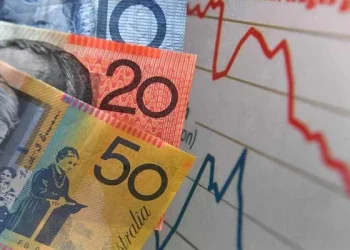The Australian Dollar (AUD) sustained its decline for the second consecutive day on Wednesday, with the AUD/USD pair witnessing losses following a disappointing report on Aussie consumer prices. The softer-than-expected data has raised concerns about the Reserve Bank of Australia (RBA) potentially adopting a dovish stance on interest rates, further exerting downward pressure on the AUD.
Australia’s Monthly Consumer Price Index (YoY) for February recorded a 3.4% rise, consistent with previous levels but slightly below the anticipated 3.5%. Despite remaining within expectations, this figure marked the lowest reading since November 2021. The AUD faced additional downward pressure post the release of Westpac Consumer Confidence data on Tuesday, which indicated a 1.8% decline to 84.4 in March 2024 from February’s 86.0, signaling a retreat from 20-month highs.
Meanwhile, the US Dollar Index (DXY) saw its second consecutive day of gains amidst a risk-off sentiment, driven by anticipation surrounding the impending release of US Personal Consumption Expenditures (PCE) scheduled for Friday. However, the decline in US Treasury yields could be attributed to expectations regarding potential rate cuts by the US Federal Reserve (Fed), thus tempering the US Dollar’s advances.
In other market movements, Australia’s Westpac Leading Index (MoM) posted a marginal increase of 0.1% in February, contrasting the previous decline of 0.09%. The Australian government has pledged to support a minimum wage increase aligned with inflation this year, recognizing the challenges faced by low-income families amid rising living costs.
Looking ahead, market analysts anticipate the People’s Bank of China (PBoC) to implement two additional Reserve Requirement Ratio (RRR) cuts in 2024, totaling a reduction of 50 basis points, as per a Bloomberg survey of economists. Furthermore, Chinese President Xi Jinping is slated to meet with US business leaders, continuing discussions initiated during his November dinner with US investors in San Francisco.
On the monetary policy front, Atlanta Fed President Raphael Bostic expressed expectations for just one rate cut this year, emphasizing the potential disruption of reducing rates prematurely. Conversely, Chicago Fed President Austan Goolsbee aligns with the majority, anticipating three cuts but stresses the necessity for further evidence of decreasing inflation before proceeding.
In terms of economic indicators, US Durable Goods Orders recorded a 1.4% increase in February, surpassing expectations of 1.3%, while US Durable Goods Orders ex Defense rose by 2.2%, compared to the anticipated 1.1%. However, US Housing Price Index (MoM) for January posted a 0.1% decline, contrasting December’s 0.1% increase.
From a technical perspective, the Australian Dollar trades near 0.6520 on Wednesday, with notable support at the psychological level of 0.6500, followed by March’s low at 0.6477. A breach below this level could test the major support at 0.6450. Conversely, immediate resistance is anticipated around the 23.6% Fibonacci retracement level of 0.6541, in conjunction with the significant barrier of 0.6550 and the 21-day Exponential Moving Average (EMA) at 0.6553.

























